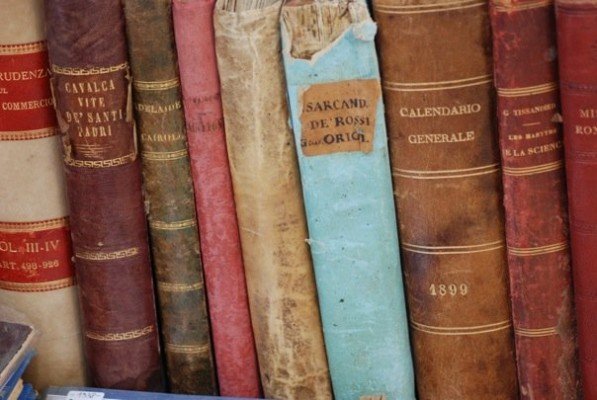“It Lit” In Translation
The perception of Italian culture abroad is mostly anchored to the country’s great artistic and literary heritage, to the extent that Italy is more clearly understood and celebrated for what it once was, than what it is now. If we restrict our field of observation to the book market, we can see how the authors translated and distributed abroad actually contribute to shaping the identity and perception of a given culture. In this sense, an interesting indicator of the international relevance of the Italian cultural production is provided by the statistics on the translations of Italian titles and the sales of publication rights to foreign publishers. The most complete source of information about translations in the world is the Index Translationum, an international bibliography of translations created in Geneva by the League of Nations in 1932, and now under the aegis of UNESCO. According to this Index, Italian is the 5th most translated language in the world after English, French, German and Russian.
The selling of publishing rights for Italian titles is indeed a flourishing market. A survey conducted by Doxa on behalf of the Italian Trade Commission (ICE), in collaboration with the Italian Publishers Association (AIE), shows that between 2001 and 2007 there was a significant rise in the sales of Italian book rights abroad. The growth was evident across the whole industry, in particular among small publishing houses: in 2007, 74 sold rights from their own authors compared to 39 in 2001 (+89.7%); among larger publishing houses, 135 sold rights compared to 86 in 2001 (+57%).
In the same years, the number of Italian titles sold abroad almost doubled, rising from 1,800 to 3,490 (+93.9%). On average, Italian publishers sell abroad the rights for about 17 titles per year (among those published by them).
Europe represents their principal outlet market. The greatest part of Italian publishing rights (77%) is indeed sold in European countries, mostly in Spain, France, Germany and Poland. The years between 2001 and 2007, however, saw a significant rebalancing in the relative weight of the various markets, with Asia and Russia almost doubling their shares.
The United States is ranked 5th in the Index’s list of the top 10 countries publishing translations from Italian (which is the 6th most translated language in the country). According to AIE, the Italian books translated into English and distributed in the United States every year are approximately 150.
What genres of books are exported? The first striking element emerging from the statistics is the great variety of the titles sold to foreign publishers: “other genres” alone accounts for 8-10% of titles exported. Between 2001 and 2007, the sale of rights for Italian novelists (602 titles) grew by 157.3%; children’s books recorded a growth of +106.6% (1,004 titles sold); and the sale of nonfiction titles grew by +440% (973 titles). Interestingly, publishing of art and illustrated books is the only segment where the sale of rights in 2007 outnumbered purchases: 616 titles (+80% over 2001) for which rights were sold, as against 264 bought (-19.8%). What about the authors? According to the Index Translationum, the top 10 Italian authors translated in the world are, in order of ranking: Umberto Eco, Italo Calvino, Dante Alighieri, Carlo Collodi, Emilio Salgari, Alberto Moravia, Gianni Rodari, Pope John Paul II, Cardinal Carlo Maria Martini and Niccolò Machiavelli.
The Ministry of Foreign Affairs actively supports the promotion of Italian language and culture abroad through grants and awards assigned to foreign publishers or translators who significantly contribute to the diffusion of Italian books in foreign languages. Special attention is paid to scientific publications and lesser-known literary works. The sum available is approximately 430,000€ annually and provides financing for the translation of more than 100 works per year.
In addition to the incentives from the Ministry of Foreign Affairs, others are granted by the Ministry of Culture, which awards a National Translation Prize, and the Publishing Department of the Prime Minister’s Office.
Among the Italian books translated and distributed in the United States from 2006 to the present – thanks to the support of the Ministry of Foreign Affairs – are classics such as Giacomo Leopardi’s Canti and Zibaldone (Farrar, Straus & Giroux), Primo Levi’s Complete Works (Norton and Company), and the Anthology of Italian Poetry from Pasolini to 2000 (Agincourt Press), but also interesting contemporary writers such as Carlo Lucarelli (Via delle Oche, Europa Editions), Giancarlo De Cataldo (The Father and the Foreigner, Europa Editions), Alessandro Piperno (The Worst Intentions, Europa Editions), Massimo Carlotto (The Fugitive, Europa Editions), Elena Ferrante (The Days of Abandonment, Europa Editions) and many others.
Public grants, the promotional activities of Italian publishers, the outstanding work of foreign translators, and the enduring interest that the Italian cultural production continues to excite worldwide have allowed an increasing number of new Italian authors to find their way to the bookshops in many countries, contributing to enriching the perception and appreciation of Italian culture abroad.
Special thanks to AIE, the Italian Ministry of Foreign Affairs, Literature Across Frontiers and ISTAT for providing valuable information and statistics for this article.
Laura Giacalone is the Associate Editor for the Italian Journal.
